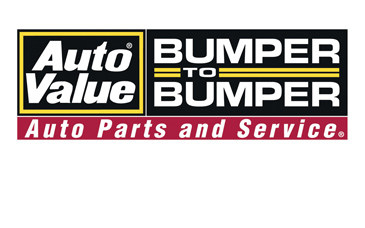
President and CEO –
Aftermarket Auto Parts Alliance
How does your group leverage data?
Data is leveraged locally by shareholders through their interaction in their markets with customers including capturing sales and usage history. That data is aggregated and applied for use with the Alliance’s technology tools nationally. It is then deployed through the Alliance Data Warehouse which feeds the Alliance’s Inventory Optimization Tool (IOT), MyPlace, national accounts’ requirements, supplier sales and marketing information, specific product issues and other data intensive activities. The Alliance has been collecting data in our data warehouse for more than a dozen years. Our segment-leading data capabilities have enabled us to stay ahead of the game on the infrastructure side. In all cases, there are only two purposes for leveraging data … reduce costs or increase sales. The more effective we are at leveraging the data, the lower costs are and higher the sales numbers go.
Is there a magic bullet for parts proliferation? How do you battle it?
Yes, there is. And it’s like every other magic bullet for vexing problems like parts proliferation; it’s called hard work, diligence and taking the right direction with technology. A lot of people have applied technology to this issue, but not everyone has done it well. The Alliance’s Inventory Optimization Tool has enabled us to become some of the most effective inventory managers in the industry. The IOT functions by using more attributes and more data sets fed by more than a dozen years of aggregated field data. It has made us the best in the business at managing inventory as witnessed by winning the Polk Inventory Efficiency Award four consecutive years.
Are there any categories of parts that are doing better now because the average vehicle age is over 11 years?
Yes … older parts. All wear items … notably brakes, batteries, exhaust, hub assemblies, rubber, shocks and wiper blades. And while your question doesn’t directly address the issue, I would be remiss if I did not mention foreign nameplate parts. We are seeing a change especially with the older and more popular Asian makes, such a Toyota, Honda and Nissan. In those cases, we see less of a preference for OE parts and greater acceptance of traditional aftermarket brands resulting in growing sales.
Are shops taking full advantage of your program group’s ecommerce offerings? Why or why not?
Yes, shops are awakening to the criticality of using ecommerce tools. Most notably, use of our multi-function tool, MyPlaceForParts, is growing by double digits monthly. This is partly due to the good work our sales people are doing and partly because we are constantly adding new features and functionality. A major area where we strive for improvement is simplicity. If you don’t make that a priority your ecommerce offerings can become too complex for many potential users. There is still plenty of opportunity for growth in and through this area and we won’t rest until every installer has a chance to experience MyPlaceForParts.
Without divulging proprietary information, describe your group’s inventory strategy for slow-moving parts.
Our main strategy is making available the hard-to-find parts our customers depend on us for. This is accomplished through the use of technology, primarily the Alliance’s Inventory Optimization Tool (IOT). IOT really shines in the area of maximizing turns and minimizing working capital. We’re also regionalizing certain parts, using technology to optimize fulfillment performance.
How do you view new car dealers — adversary or customer? Can you talk a little about that?
We consider all parts installers to be in one of two categories: customers or prospects. Unfortunately, some car dealers view us as adversaries. That mindset really limits their ability to serve multiple makes and often slows down their bay turnaround times. According to Jim Lang, dealers continue to lose bay count and you’d think they would see the wisdom in better utilizing their service facilities without having to lay-in large parts inventories. When they’re ready, we are. I sometimes think we bring this issue of competitiveness with car dealerships on ourselves. We allow ourselves to get worked up about dealerships when we are all together at our association meetings. The real drivers behind the issue are the car manufacturers themselves. Left to their own devices, most dealerships are far more interested in stocking and selling cars than they are parts.
What overseas opportunities exist for traditional, American-based program groups?
The Alliance has taken the lead in the area of global expansion. We were the first North American distribution group to expand overseas when we joined Temot International in 2002. That initial move really helped us get our global sea legs under us. My own experiences have taught me to look beyond the borders of North America for greater opportunities. Having made my first trip to Hong Kong in 1992, I became comfortable with the customs, culture and business practices in Asia. That familiarity increased over the years with subsequent visits and business interactions and culminated with the formation of the China Aftermarket Auto Parts Alliance (CAAPA) in December of last year. CAAPA initially consisted of five established, well-financed warehouse distributors operating more than 150 auto parts stores in 15 provinces. Membership has more than doubled to 12 WDs in six months. Progressive thinkers in today’s aftermarket understand that success can no longer depend on just buying better, but on selling more. Increased sales provide the only path that will lead to increased profitability for all channel partners. China, with its double-digit CAGR since 2004 presents an outstanding opportunity for growth.








